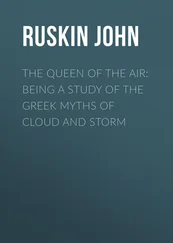John Ruskin - The Storm-Cloud of the Nineteenth Century
Здесь есть возможность читать онлайн «John Ruskin - The Storm-Cloud of the Nineteenth Century» — ознакомительный отрывок электронной книги совершенно бесплатно, а после прочтения отрывка купить полную версию. В некоторых случаях можно слушать аудио, скачать через торрент в формате fb2 и присутствует краткое содержание. Жанр: foreign_prose, literature_19, foreign_antique, на английском языке. Описание произведения, (предисловие) а так же отзывы посетителей доступны на портале библиотеки ЛибКат.
- Название:The Storm-Cloud of the Nineteenth Century
- Автор:
- Жанр:
- Год:неизвестен
- ISBN:нет данных
- Рейтинг книги:3 / 5. Голосов: 1
-
Избранное:Добавить в избранное
- Отзывы:
-
Ваша оценка:
- 60
- 1
- 2
- 3
- 4
- 5
The Storm-Cloud of the Nineteenth Century: краткое содержание, описание и аннотация
Предлагаем к чтению аннотацию, описание, краткое содержание или предисловие (зависит от того, что написал сам автор книги «The Storm-Cloud of the Nineteenth Century»). Если вы не нашли необходимую информацию о книге — напишите в комментариях, мы постараемся отыскать её.
The Storm-Cloud of the Nineteenth Century — читать онлайн ознакомительный отрывок
Ниже представлен текст книги, разбитый по страницам. Система сохранения места последней прочитанной страницы, позволяет с удобством читать онлайн бесплатно книгу «The Storm-Cloud of the Nineteenth Century», без необходимости каждый раз заново искать на чём Вы остановились. Поставьте закладку, и сможете в любой момент перейти на страницу, на которой закончили чтение.
Интервал:
Закладка:
All these questions were put, closely and precisely, four-and-twenty years ago, in the 1st chapter of the 7th part of 'Modern Painters,' paragraphs 4 to 9, of which I can here allow space only for the last, which expresses the final difficulties of the matter better than anything said in this lecture:—
"But farther: these questions of volatility, and visibility, and hue, are all complicated with those of shape. How is a cloud outlined? Granted whatever you choose to ask, concerning its material, or its aspect, its loftiness and luminousness,—how of its limitation? What hews it into a heap, or spins it into a web? Cold is usually shapeless, I suppose, extending over large spaces equally, or with gradual diminution. You cannot have in the open air, angles, and wedges, and coils, and cliffs, of cold. Yet the vapor stops suddenly, sharp and steep as a rock, or thrusts itself across the gates of heaven in likeness of a brazen bar; or braids itself in and out, and across and across, like a tissue of tapestry; or falls into ripples, like sand; or into waving shreds and tongues, as fire. On what anvils and wheels is the vapor pointed, twisted, hammered, whirled, as the potter's clay? By what hands is the incense of the sea built up into domes of marble?"
9
The opposed conditions of the higher and lower orders of cloud, with the balanced intermediate one, are beautifully seen on mountain summits of rock or earth. On snowy ones they are far more complex: but on rock summits there are three distinct forms of attached cloud in serene weather; the first that of cloud veil laid over them, and falling in folds through their ravines, (the obliquely descending clouds of the entering chorus in Aristophanes); secondly, the ascending cloud, which develops itself loosely and independently as it rises, and does not attach itself to the hill-side, while the falling veil cloud clings to it close all the way down;—and lastly the throned cloud, which rests indeed on the mountain summit, with its base, but rises high above into the sky, continually changing its outlines, but holding its seat perhaps all day long.
These three forms of cloud belong exclusively to calm weather; attached drift cloud, (see Note 11) can only be formed in the wind.
10
'Glaciers of the Alps,' page 10.—"Let a pound weight be placed upon a cube of granite" (size of supposed cube not mentioned), "the cube is flattened, though in an infinitesimal degree. Let the weight be removed, the cube remains a little flattened. Let us call the cube thus flattened No. 1. Starting with No. 1 as a new mass, let the pound weight be laid upon it. We have a more flattened mass, No. 2.... Apply this to squeezed rocks, to those, for example, which form the base of an obelisk like the Matterhorn,—the conclusion seems inevitable that the mountain is sinking by its own weight ," etc., etc. Similarly the Nelson statue must be gradually flattening the Nelson column, and in time Cleopatra's needle will be as flat as her pincushion?
11
'Glaciers of the Alps,' page 146.—"The sun was near the western horizon, and I remained alone upon the Grat to see his last beams illuminate the mountains, which, with one exception, were without a trace of cloud.
"This exception was the Matterhorn, the appearance of which was extremely instructive. The obelisk appeared to be divided in two halves by a vertical line, drawn from its summit half-way down, to the windward of which we had the bare cliffs of the mountain; and to the left of it a cloud which appeared to cling tenaciously to the rocks.
"In reality, however, there was no clinging; the condensed vapor incessantly got away, but it was ever renewed, and thus a river of cloud had been sent from the mountain over the valley of Aosta. The wind, in fact, blew lightly up the valley of St. Nicholas, charged with moisture, and when the air that held it rubbed against the cold cone of the Matterhorn, the vapor was chilled and precipitated in his lee."
It is not explained, why the wind was not chilled by rubbing against any of the neighboring mountains, nor why the cone of the Matterhorn, mostly of rock, should be colder than cones of snow. The phenomenon was first described by De Saussure, who gives the same explanation as Tyndall; and from whom, in the first volume of 'Modern Painters,' I adopted it without sufficient examination. Afterwards I re-examined it, and showed its fallacy, with respect to the cap or helmet cloud, in the fifth volume of 'Modern Painters,' page 124, in the terms given in the subjoined note,
["But both Saussure and I ought to have known,—we did know, but did not think of it,—that the covering or cap-cloud forms on hot summits as well as cold ones;—that the red and bare rocks of Mont Pilate, hotter, certainly, after a day's sunshine than the cold storm-wind which sweeps to them from the Alps, nevertheless have been renowned for their helmet of cloud, ever since the Romans watched the cloven summit, gray against the south, from the ramparts of Vindonissa, giving it the name from which the good Catholics of Lucerne have warped out their favorite piece of terrific sacred biography. And both my master and I should also have reflected that if our theory about its formation had been generally true, the helmet cloud ought to form on every cold summit, at the approach of rain, in approximating proportions to the bulk of the glaciers; which is so far from being the case that not only (A) the cap-cloud may often be seen on lower summits of grass or rock, while the higher ones are splendidly clear (which may be accounted for by supposing the wind containing the moisture not to have risen so high); but (B) the cap-cloud always shows a preference for hills of a conical form, such as the Mole or Niesen, which can have very little power in chilling the air, even supposing they were cold themselves; while it will entirely refuse to form huge masses of mountain, which, supposing them of chilly temperament, must have discomforted the atmosphere in their neighborhood for leagues"]
but I still retained the explanation of Saussure for the lee-side cloud, engraving in plate 69 the modes of its occurrence on the Aiguille Dru, of which the most ordinary one was afterwards represented by Tyndall in his 'Glaciers of the Alps,' under the title of 'Banner-cloud.' Its less imaginative title, in 'Modern Painters,' of 'Lee-side cloud,' is more comprehensive, for this cloud forms often under the brows of far-terraced precipices, where it has no resemblance to a banner. No true explanation of it has ever yet been given; for the first condition of the problem has hitherto been unobserved,—namely, that such cloud is constant in certain states of weather, under precipitous rocks;—but never developed with distinctness by domes of snow.
But my former expansion of Saussure's theory is at least closer to the facts than Professor Tyndall's "rubbing against the rocks," and I therefore allow room for it here, with its illustrative wood-cut.
"When a moist wind blows in clear weather over a cold summit, it has not time to get chilled as it approaches the rock, and therefore the air remains clear, and the sky bright on the windward side; but under the lee of the peak, there is partly a back eddy, and partly still air; and in that lull and eddy the wind gets time to be chilled by the rock, and the cloud appears, as a boiling mass of white vapor, rising continually with the return current to the upper edge of the mountain, where it is caught by the straight wind and partly torn, partly melted away in broken fragments.
"In the accompanying figure, the dark mass represents the mountain peak, the arrow the main direction of the wind, the curved lines show the directions of such current and its concentration, and the dotted line encloses the space in which cloud forms densely, floating away beyond and above in irregular tongues and flakes."
Читать дальшеИнтервал:
Закладка:
Похожие книги на «The Storm-Cloud of the Nineteenth Century»
Представляем Вашему вниманию похожие книги на «The Storm-Cloud of the Nineteenth Century» списком для выбора. Мы отобрали схожую по названию и смыслу литературу в надежде предоставить читателям больше вариантов отыскать новые, интересные, ещё непрочитанные произведения.
Обсуждение, отзывы о книге «The Storm-Cloud of the Nineteenth Century» и просто собственные мнения читателей. Оставьте ваши комментарии, напишите, что Вы думаете о произведении, его смысле или главных героях. Укажите что конкретно понравилось, а что нет, и почему Вы так считаете.












